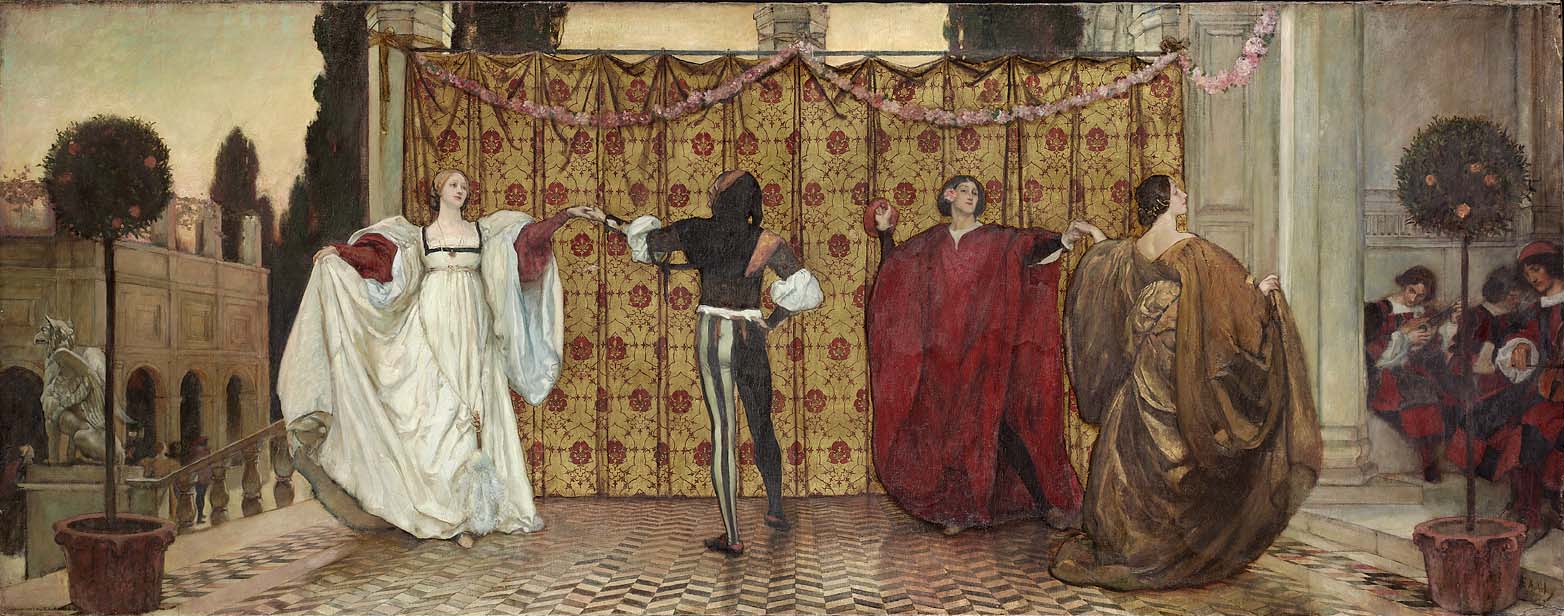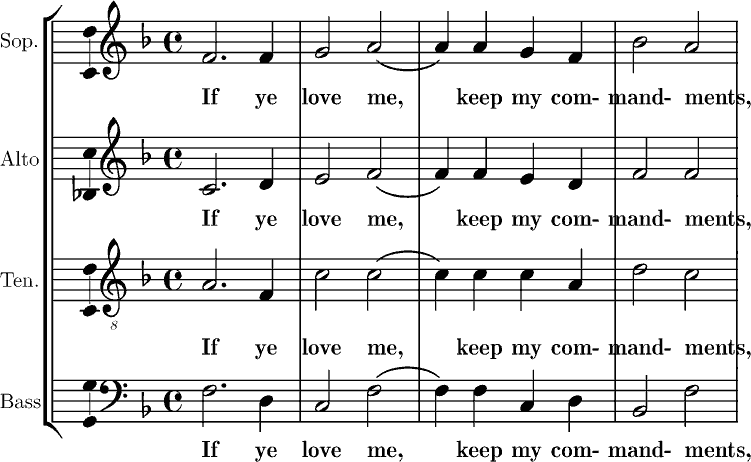|
Pavane
The ''pavane'' ( ; it, pavana, ''padovana''; german: Paduana) is a slow processional dance common in Europe during the 16th century (Renaissance). The pavane, the earliest-known music for which was published in Venice by Ottaviano Petrucci, in Joan Ambrosio Dalza's ''Intabolatura de lauto libro quarto'' in 1508, is a sedate and dignified couple dance, similar to the 15th-century basse danse. The music which accompanied it appears originally to have been fast or moderately fast but, like many other dances, became slower over time . Origin of term The word ''pavane'' is most probably derived from Italian 'danza''''padovana'' , , meaning " ancetypical of Padua" (similar to Bergamask, "dance from Bergamo"); ''pavan'' is an old Northern Italian form for the modern Italian adjective ''padovano'' (= from Padua). This origin is consistent with the equivalent form, ''Paduana''. An alternative explanation is that it derives from the Spanish ''pavón'' meaning ''peacock'' . A ... [...More Info...] [...Related Items...] OR: [Wikipedia] [Google] [Baidu] |
Joan Ambrosio Dalza
Joan Ambrosio Dalza ( fl. 1508) was a Milanese lutenist and composer. His surviving works comprise the fourth volume of Ottaviano Petrucci's influential series of lute music publications, ''Intabolatura de lauto libro quarto'' (Venice, 1508). Dalza is referred to as "milanese" in the preface, so it must be assumed he was either born in Milan, or worked there, or both.Wess, Coelho, Grove. Together with the oeuvres of Francesco Spinacino and Vincenzo Capirola, Dalza's work constitutes an important part of early Renaissance lute music. The surviving pieces comprise 42 dances, nine ricercares, five tastar de corde, four intabulations and a piece called ''Caldibi castigliano''. The dances are arranged in miniature suites. Each of the five pavanes (five ''alla venetiana'', four ''alla ferrarese'') is followed by a saltarello and a piva that are thematically and harmonically related to it. Other groupings include pairs of ''tastar de corde'' with a ''recercar dietro''. Some pieces, such ... [...More Info...] [...Related Items...] OR: [Wikipedia] [Google] [Baidu] |
Basse Danse
The ''basse danse'', or "low dance", was a popular court dance in the 15th and early 16th centuries, especially at the Burgundian court. The word ''basse'' describes the nature of the dance, in which partners move quietly and gracefully in a slow gliding or walking motion without leaving the floor, while in livelier dances both feet left the floor in jumps or leaps. The basse danse was a precursor of the pavane as a dignified processional dance. The term may apply to the dance or the music alone. History The earliest record of a basse danse is found in an Occitan poem of the 1320s by Raimon de Cornet, who notes that the '' joglars'' performed them. The ''bassa danza'' is described in the dance treatise of Guglielmo Ebreo da Pesaro, in northern Italy towards the end of the 15th century, and by his friend Antonio Cornazzano, for whom it was the queen of all dance measures, low dance to be contrasted with the ''alta danza'', the "high" or leaping dance called the '' saltare ... [...More Info...] [...Related Items...] OR: [Wikipedia] [Google] [Baidu] |
Pavane (Fauré)
The Pavane in F-sharp minor, Op. 50, is a short work by the French composer Gabriel Fauré written in 1887. It was originally a piano piece, but is better known in Fauré's version for orchestra and optional chorus. It was first performed in Paris in 1888, becoming one of the composer's most popular works. History The work is titled after the slow processional Spanish court dance of the same name. Fauré's original version of the piece was written for piano and chorus in the late 1880s.Howat, p. 155 He described it as "elegant, assuredly, but not particularly important." Fauré composed the orchestral version at Le Vésinet in the summer of 1887.Orledge, Robert (1993). Notes to EMI CD CDM 7-64715-2 He envisaged a purely orchestral composition, using modest forces, to be played at a series of light summer concerts conducted by Jules Danbé. After Fauré opted to dedicate the work to his patron, Elisabeth, comtesse Greffulhe, he felt compelled to stage a grander affair and ... [...More Info...] [...Related Items...] OR: [Wikipedia] [Google] [Baidu] |
Thoinot Arbeau
Thoinot Arbeau is the anagrammatic pen name of French cleric Jehan Tabourot (March 17, 1520 – July 23, 1595). Tabourot is most famous for his ''Orchésographie'', a study of late sixteenth-century French Renaissance social dance. He was born in Dijon and died in Langres. ''Orchésographie'' and other work ''Orchésographie'', first published in Langres, 1589,The title page's "Extraict du priuilege" is dated "Novembre 1588". provides information on social ballroom behaviour and on the interaction of musicians and dancers. It is available online in facsimile and in plain text. There is an English translation by Mary Stewart Evans, edited by Julia Sutton, in print with Dover Publications. It contains numerous woodcuts of dancers and musicians and includes many dance tabulations in which extensive instructions for the steps are lined up next to the musical notes, a significant innovation in dance notation at that time. He also published on astronomy: ''Compot et Manuel Kale ... [...More Info...] [...Related Items...] OR: [Wikipedia] [Google] [Baidu] |
John Jenkins (composer)
John Jenkins (1592–1678), was an English composer who was born in Maidstone, Kent and who died at Kimberley, Norfolk. Biography Little is known of his early life. The son of Henry Jenkins, a carpenter who occasionally made musical instruments, he may have been the "Jack Jenkins" employed in the household of Anne Russell, Countess of Warwick in 1603. The first positive historical record of Jenkins is amongst the musicians who performed the masque ''The Triumph of Peace'' in 1634 at the court of King Charles I. Jenkins was considered a virtuoso on the lyra viol. Charles commented that Jenkins did "wonders on an inconsiderable instrument." When the English Civil War broke out in 1642 it forced Jenkins, like many others, to migrate to the rural countryside. During the 1640s he was employed as music-master to two Royalist families, the Derham family at West Dereham and Hamon le Strange of Hunstanton. He was also a friend of the composer William Lawes (1602–1645), who was ... [...More Info...] [...Related Items...] OR: [Wikipedia] [Google] [Baidu] |
Maurice Ravel
Joseph Maurice Ravel (7 March 1875 – 28 December 1937) was a French composer, pianist and conductor. He is often associated with Impressionism along with his elder contemporary Claude Debussy, although both composers rejected the term. In the 1920s and 1930s Ravel was internationally regarded as France's greatest living composer. Born to a music-loving family, Ravel attended France's premier music college, the Paris Conservatoire; he was not well regarded by its conservative establishment, whose biased treatment of him caused a scandal. After leaving the conservatoire, Ravel found his own way as a composer, developing a style of great clarity and incorporating elements of modernism, baroque, neoclassicism and, in his later works, jazz. He liked to experiment with musical form, as in his best-known work, ''Boléro'' (1928), in which repetition takes the place of development. Renowned for his abilities in orchestration, Ravel made some orchestral arrangements of other compose ... [...More Info...] [...Related Items...] OR: [Wikipedia] [Google] [Baidu] |
Allemande
An ''allemande'' (''allemanda'', ''almain(e)'', or ''alman(d)'', French: "German (dance)") is a Renaissance and Baroque dance, and one of the most common instrumental dance styles in Baroque music, with examples by Couperin, Purcell, Bach and Handel. It is often the first movement of a Baroque suite of dances, paired with a subsequent courante, though it is sometimes preceded by an introduction or prelude. A quite different, later, Allemande, named as such in the time of Mozart and Beethoven, still survives in Germany and Switzerland and is a lively triple-time social dance related to the waltz and the '' Ländler''.Scholes P., 1970, article: ''Allemande''. History The allemande originated in the 16th century as a duple metre dance of moderate tempo, already considered very old, with a characteristic "double-knocking" upbeat of two or occasionally three sixteenth notes.Bach. ''The French Suites: Embellished version''. Bärenreiter Urtext It appears to have derive ... [...More Info...] [...Related Items...] OR: [Wikipedia] [Google] [Baidu] |
Galliard
The ''galliard'' (; french: gaillarde; it, gagliarda) was a form of Renaissance dance and music popular all over Europe in the 16th century. It is mentioned in dance manuals from England, Portugal, France, Spain, Germany, and Italy. Dance form The ''galliard'' is not an improvised dance, but rather, it consists of choreographed patterns of steps, which occupy one or more measures of music. In one measure, a galliard typically has five steps; in French such a basic step is called a ''cinq pas'' and in Italy, ''cinque passi''. This is sometimes written in English sources as ''sinkapace''. These steps are: right, left, right, left, cadence. The galliard is an athletic dance, characterised by leaps, jumps, hops and other similar figures. The main feature that defines a galliard step is a large jump, after which the dancer lands with one leg ahead of the other. This jump is called a ''cadence,'' and the final landing is called the ''posture.'' The cadence is typically preceded by ... [...More Info...] [...Related Items...] OR: [Wikipedia] [Google] [Baidu] |
Half Note
''Half Note'' is a live album by saxophonist Clifford Jordan which was recorded in 1974 and first released on the SteepleChase label in 1985. accessed April 9, 2014 Reception In his review on , Scott Yanow notes that this is "An good example of Jordan's music"Track listing ''All compositions by Clifford Jordan except as indicated'' # "Holy Land" (Cedar Walton) - 8:41 # "The Glass Bead Games" - 5:38 # " St. Thomas" ( |
Homophonic
In music, homophony (;, Greek: ὁμόφωνος, ''homóphōnos'', from ὁμός, ''homós'', "same" and φωνή, ''phōnē'', "sound, tone") is a texture in which a primary part is supported by one or more additional strands that flesh out the harmony. One melody predominates while the other parts play either single notes or an elaborate accompaniment. This differentiation of roles contrasts with equal-voice polyphony (in which similar lines move with rhythmic and melodic independence to form an even texture) and monophony (in which all parts move in unison or octaves). Historically, homophony and its differentiated roles for parts emerged in tandem with tonality, which gave distinct harmonic functions to the soprano, bass and inner voices. A homophonic texture may be homorhythmic, which means that all parts have the same rhythm. Chorale texture is another variant of homophony. The most common type of homophony is melody-dominated homophony, in which one voice, often t ... [...More Info...] [...Related Items...] OR: [Wikipedia] [Google] [Baidu] |
Tabor (instrument)
A tabor, tabret ( cy, Tabwrdd), Tambour De Provence, or Tambourin (Provencal) is a portable snare drum typically played either with one hand or with two drumsticks. The word "tabor" is simply an English variant of a Latin-derived word meaning "drum"—cf. french: tambour, links=no, it, tamburo, links=noHarms Historical Percussion's Tabor page It has been used in the military as a marching instrument, and has been used as accompaniment in parades and processions. Construction  A tabo ...
A tabo ...
[...More Info...] [...Related Items...] OR: [Wikipedia] [Google] [Baidu] |





